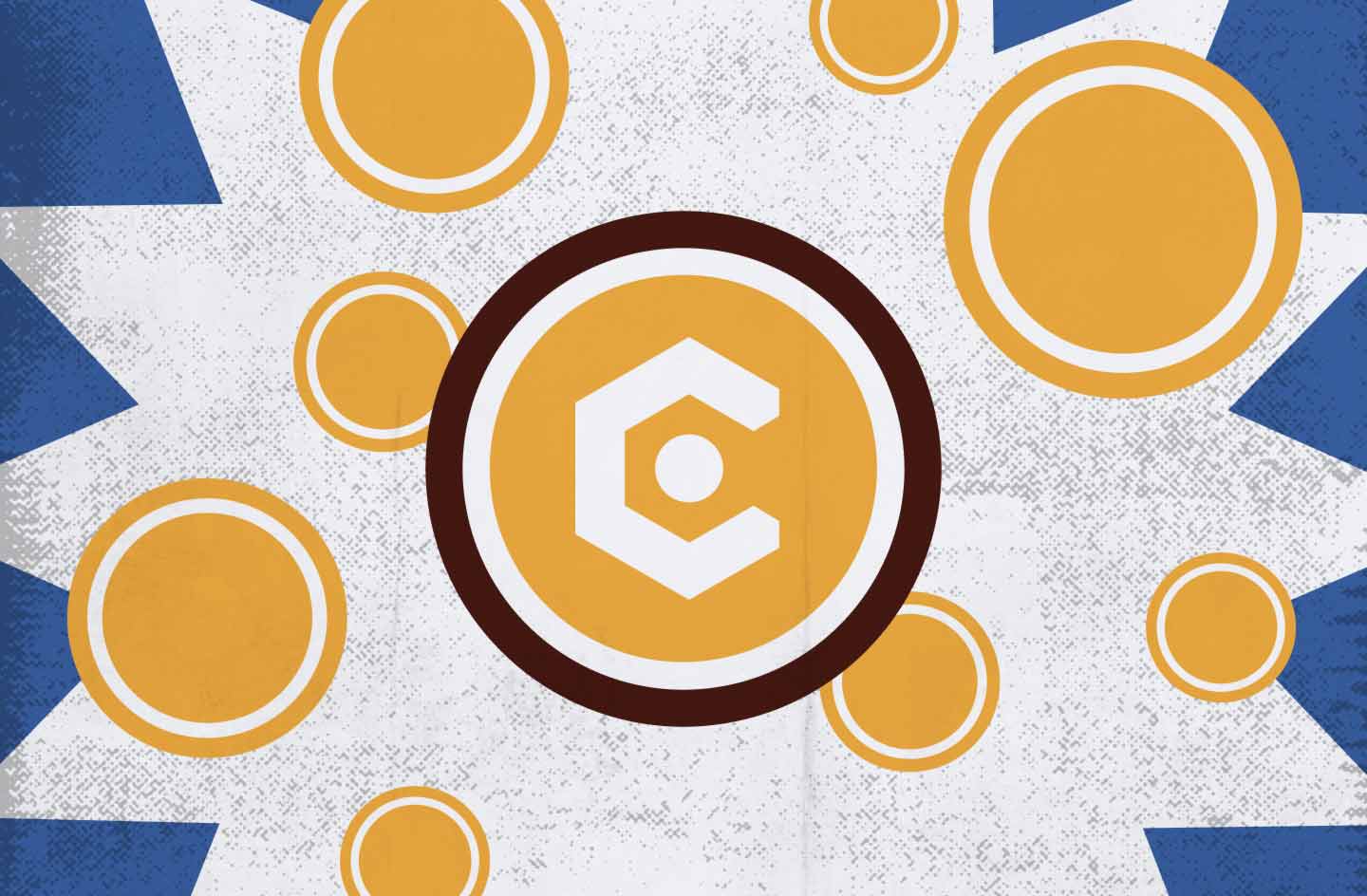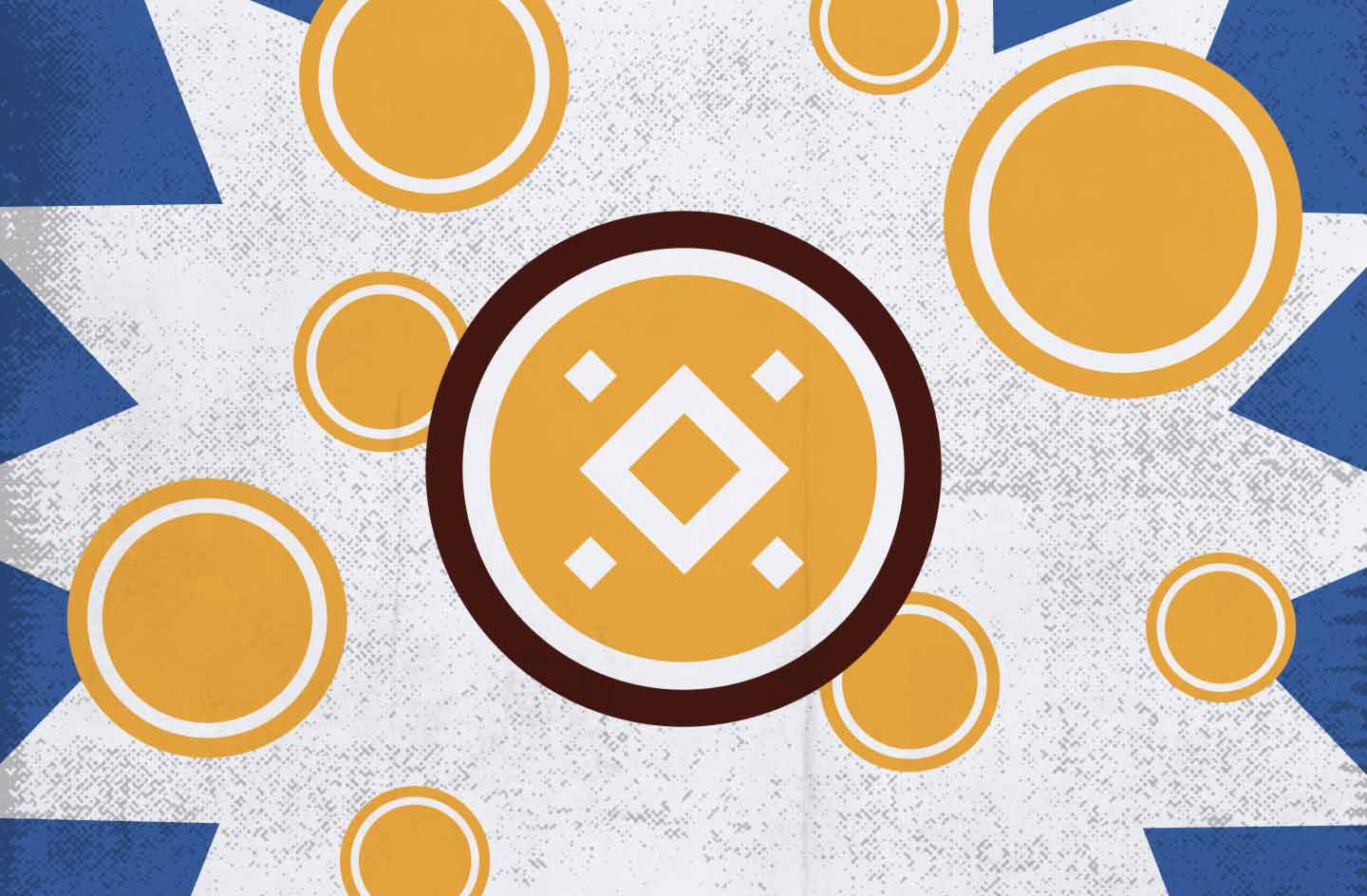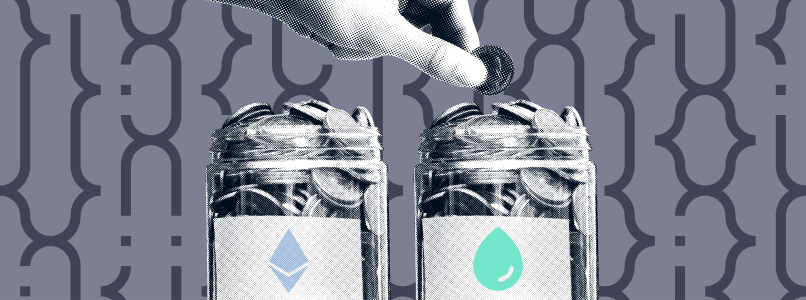Let’s explore the advantages of two more popular SaaS platforms — MyCointainer and Chorus One.
MyCointainer

Using the MyCointainer automated staking platform is an easy and fast way to generate passive income from digital assets. The main benefits of the platform are:
- User funds protection. In case of emergencies, user deposits are protected by the Secure Asset Fund for Users (SAFU). The platform uses the safest way to store assets — cold wallets.
- Wide list of coins for staking. MyCointainer allows you to stake 100+ popular coins based on PoS and stablecoins and perform Ethereum 2.0 staking.
- Giveaways and airdrops. The service allows users to participate in various coin giveaways and informs them about upcoming airdrops.
- A built-in cryptocurrency exchange. Trading through it is rewarded with bonuses from the service.
- Beneficial bonus programs. MyCointainer offers users four tariff plans. We’ll tell you more about them below.
In order to use the platform and delegate assets to staking on MyCointainer, you need to go through three simple steps:
- Register on the platform. All you need to do is provide an email address, confirm it, and create a password. Next, you need to verify the created account with your ID and phone number.
- Choose an asset for staking. Coins for staking can be transferred from a third-party wallet through the Deposit section or purchased via a built-in exchange for fiat or crypto through the Exchange section.
- Send coins to staking. Select the desired asset in the Staking & Masternodes panel, enter the amount and confirm its delegation.
Staking will start automatically, and the corresponding card will appear on the account control panel, through which you can view and manage the assets sent to staking. When clicking on the coin card, detailed staking information will be available — the reward amount, the terms of deposit, etc.
Withdrawals are made through the My Account section of the Withdraw tab. In the drop-down list, you need to select the desired asset, the amount to be transferred, and specify the wallet address of the coin recipient. The maximum time to process the transfer is 24 hours, but the platform usually processes the request much faster.
MyCointainer tariff plans:
- Basic. The Basic plan is free for all users. It provides access to staking 14 popular assets on PoS. The minimum rate is $1.
- Power Zero. The benefits are zero fees for exchanging over 300 pairs of tokens through the built-in exchange on the platform and 0% staking fees for all assets available. The subscription costs €7.9 per month.
- Power Max. In addition to the features of the Zero plan, there is a zero withdrawal fee of €15,000 per month. Tariff users get access to exclusive airdrops and giveaways. The standard subscription price is €21.9 per month, but there is also a limited number of offers for €14.9 per month.
- Power Percent. While keeping all the benefits of Max, the plan offers automatic extra coins to the account, which are added at least once every few weeks. Users can earn an exclusive discount on purchasing future MyCointainer platform tokens (to be released in summer 2022). The maximum discount will be 24%, and the Percent plan users will automatically receive a 1% discount for each month they use the platform. The standard monthly price of the plan is €29.9, or €25.4 if subscribed for a year.
It’s worth noting that the prices for the tariff plans are specified without VAT and payment processing fees, and there are discounts from 5% to 15% for longer subscription periods.
MyCointainer users note the site’s main advantages:
- convenience for beginners;
- support for deposits in fiat currency;
- availability of a mobile app for Android and iOS.
The most profitable coins on MyCointainer are Decimal (DEL), with an APY of 101.4%, and Beyond Protocol (BP), with an annual profitability of 101%. However, the staking fees for these coins are also the highest at 9.13% and 9.09%, respectively. Assets with a fairly high APY are BitcoinPoS (BPS) and ExclusiveCoin (EXCL), for which MyCointainer offers 70% and 68% profitability on an annual basis. However, their yields will also be lower due to fees of around 6.3% and 6.12%, respectively.
Staking of Tether (USDT), USD Coin (USDC), and Dai (DAI) will yield 10% per annum, with a 0.9% fee charge. Ethereum 2.0 staking through MyCointainer has a profit of 8% per year and a commission of 0.72%.
Chorus One

The non-custodial staking platform Chorus One offers investors the opportunity to delegate funds to earn passive income in two ways:
- Whitelabel Staking, aka Node-as-a-Service. Investors willing to delegate over $10 million in digital assets can create a validator node and provide access to its collateral to other investors, profiting not only from staking but also from the operation of the node itself. In this case, Chorus One programmers fully support the created node and monitor the operation of its infrastructure. Whitelabel supports Band, Ethereum, The Graph, Oasis, Near, Kusama, and Regen networks.
- Liquid Staking. This allows investors to participate in liquid DeFi staking via the Lido Finance service. It also enables Solana staking using stSOL liquidity tokens with an annual return of around 4.46%. Ethereum 2.0 staking is available with stETH native tokens with an APY of approximately 4.2%.
Chorus One provides allows investors to delegate 32 coins to staking based on the PoS algorithm for passive returns. The details of staking some of them are as follows:
- Cosmos (ATOM). The expected staking yield is 17.1%. With market fluctuations, the real return on ATOM is about 9.6%. The minimum deposit period is 21 days. You can connect to Chorus One validator nodes using the Keplr crypto wallet.
- Polkadot (DOT). The nominal APY is about 14%, the real DOT staking yield is around 13%. Asset delegation is possible through Polkadot JS.
- Kava (KAVA). The annual yield is 32.47%, with an expected APY drop to 27.7%. KAVA has a minimum deposit period of 21 days. Staking can be done via Keplr.
- NEAR Protocol (NEAR). The nominal yield on the asset is 9.68% per annum, with an expected APY increase to 11.87%. You can connect to the platform’s validator nodes via Near Wallet.
- Tezos (XTZ). The expected return on the asset is 2.68% per annum, with an increase in APY possible up to 5.6%. Delegation of XTZ is available through Atomex and Ledger wallets.
- Osmosis (OSMO). The nominal yield on the asset is 50.22% per annum, with an expected increase to 92%. The minimum OSMO deposit period is 21 days. Connection to Chorus One validator nodes is possible through Keplr.
- Terra (LUNA). Tokens from the updated Phoenix-1 blockchain network are available for delegation to Chorus One. The expected yield is 37.8% per annum, but the real APY is 7%. You can connect to the platform’s nodes through the Terra Station app.
Chorus One plans to add the ability to stake Economy (BICO), NYM (NYM), Elmos (ELMOS), Helium (HNT), and several others in the near future.
SaaS platforms offer staking via pre-configured nodes of their validators, but connecting to them can confuse those unfamiliar with staking through crypto wallets. We shouldn’t forget about SaaS platform fees, due to which the real staking profitability will be lower than expected.










